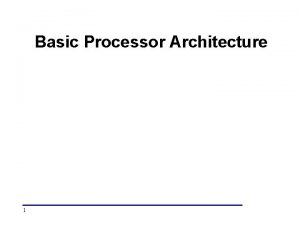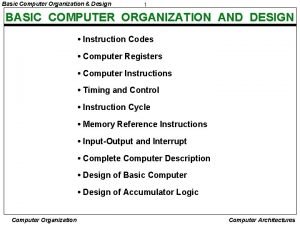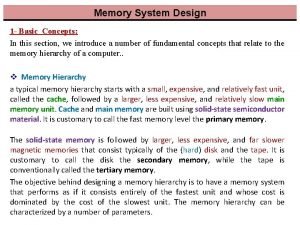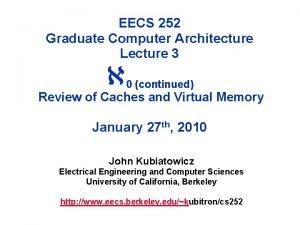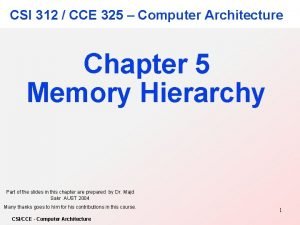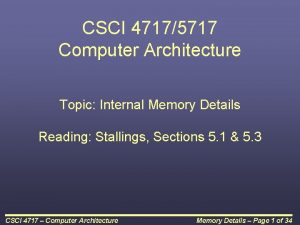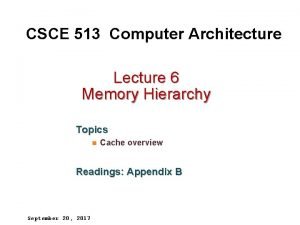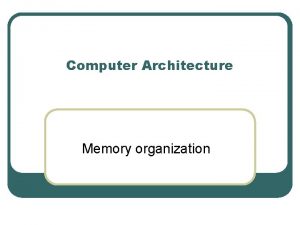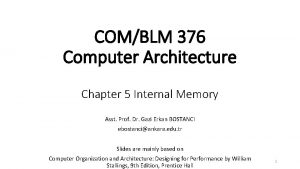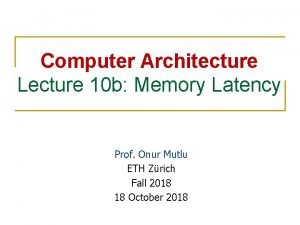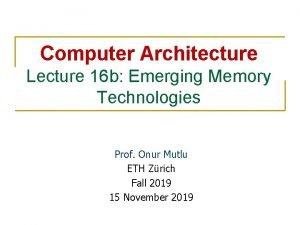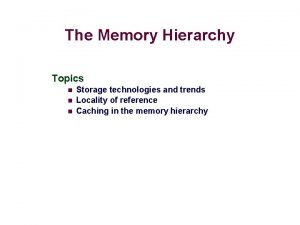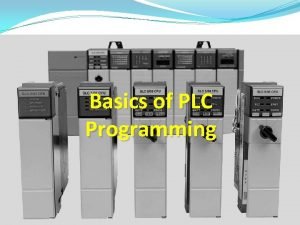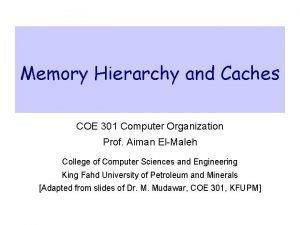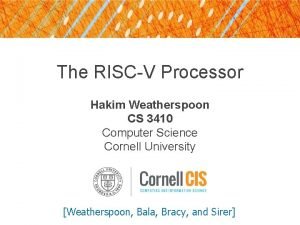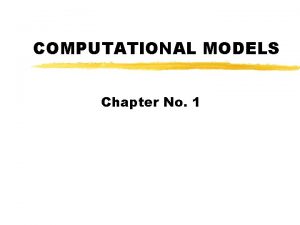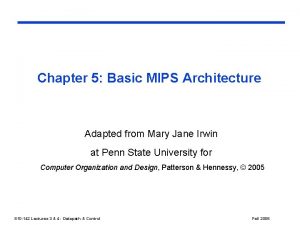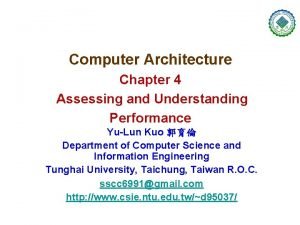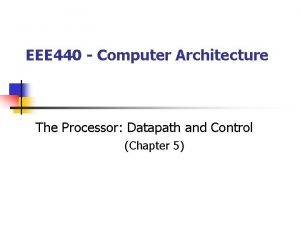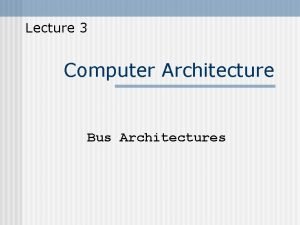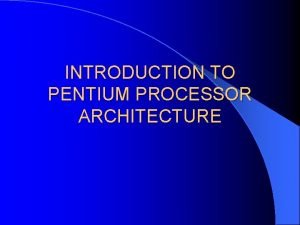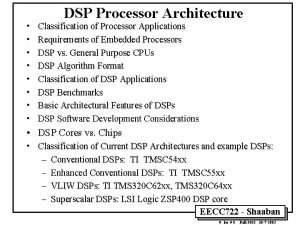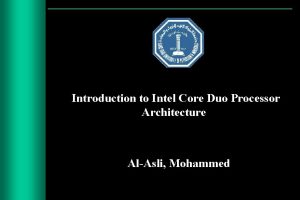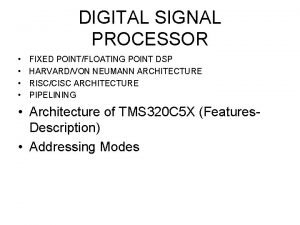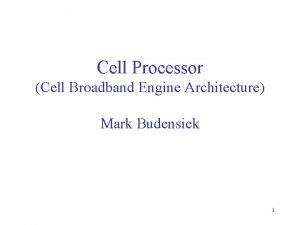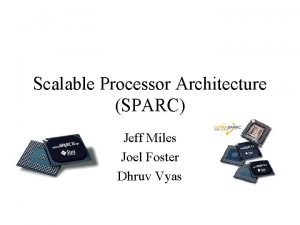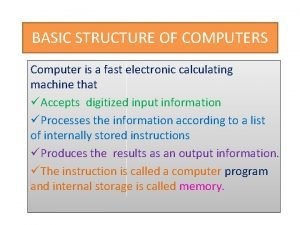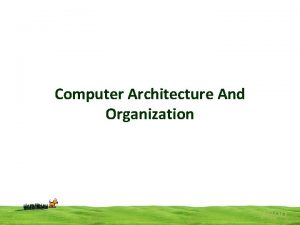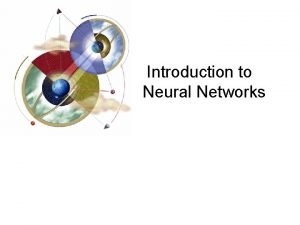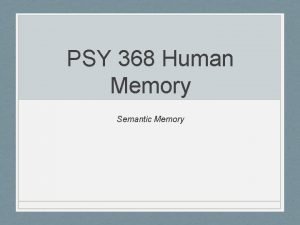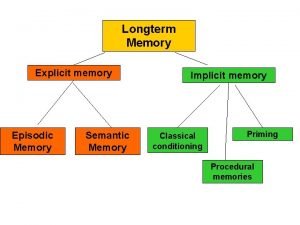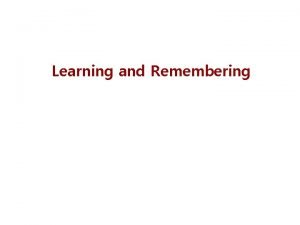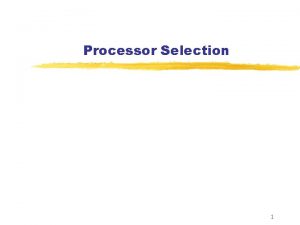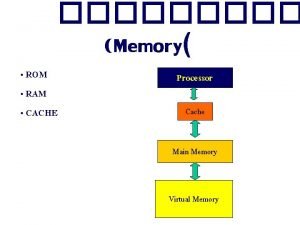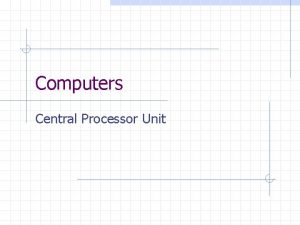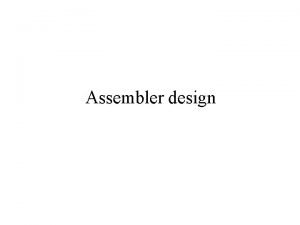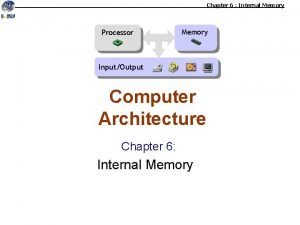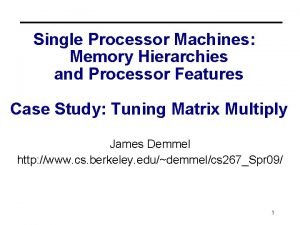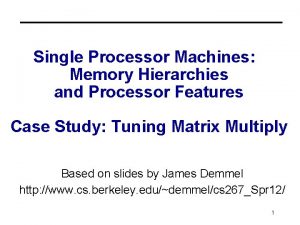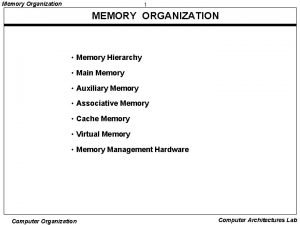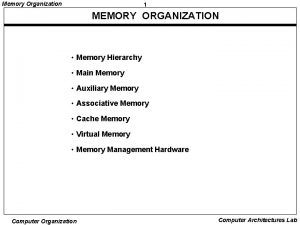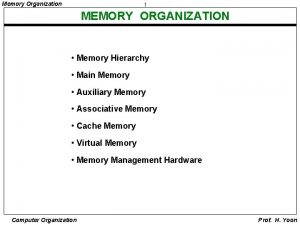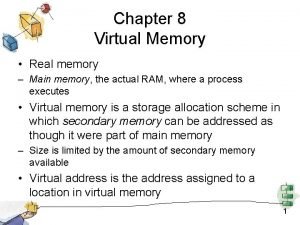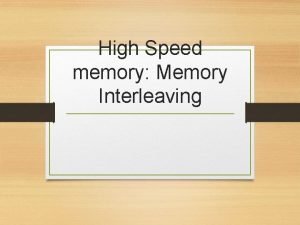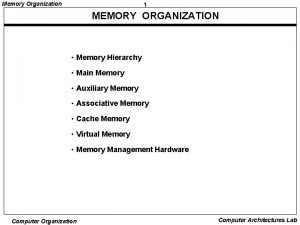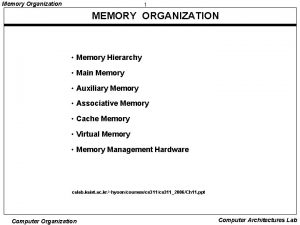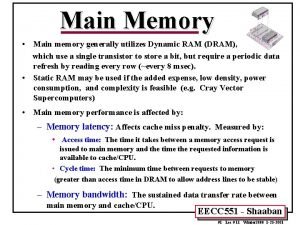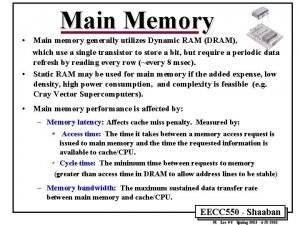Computer Architecture 1 Basic Elements Processor Main Memory

Computer Architecture 1

Basic Elements • Processor • Main Memory – volatile – referred to as real memory or primary memory • I/O modules – secondary memory devices – communications equipment – terminals • System bus – communication among processors, memory, and I/O modules 2

Processor • Two internal registers – Memory address register (MAR) • Specifies the address for the next read or write – Memory buffer register (MBR) • Contains data written into memory or receives data read from memory – I/O address register – I/O buffer register 3

Top-Level Components 4

Processor Registers • User-visible registers – Enable programmer to minimize mainmemory references by optimizing register use • Control and status registers – Used by processor to control operating of the processor – Used by privileged operating-system routines to control the execution of programs 5

User-Visible Registers • May be referenced by machine language • Available to all programs - application programs and system programs • Types of registers – Data – Address • Index • Stack pointer 6

User-Visible Registers • Address Registers – Index • Involves adding an index to a base value to get an address – Stack pointer • Points to top of stack 7

Control and Status Registers • Program Counter (PC) – Contains the address of an instruction to be fetched • Instruction Register (IR) – Contains the instruction most recently fetched 8

Control and Status Registers • Condition Codes or Flags – Bits set by the processor hardware as a result of operations – Examples • • Positive result Negative result Zero Overflow 9

Instruction Execution • Two steps – Processor reads instructions from memory • Fetchesh – Processor executes each instruction 10

Instruction Cycle 11

Instruction Fetch and Execute • The processor fetches the instruction from memory • Program counter (PC) holds address of the instruction to be fetched next • Program counter is incremented after each fetch 12

Instruction Register • Fetched instruction is placed in the instruction register • Categories – Processor-memory • Transfer data between processor and memory – Processor-I/O • Data transferred to or from a peripheral device – Data processing • Arithmetic or logic operation on data – Control • Alter sequence of execution 13

Interrupts • Interrupt the normal sequencing of the processor • Most I/O devices are slower than the processor – Processor must pause to wait for device 14

Classes of Interrupts 15

Program Flow of Control Without Interrupts 16

Program Flow of Control With Interrupts, Short I/O Wait 17

Program Flow of Control With Interrupts; Long I/O Wait 18

Interrupt Handler • Program to service a particular I/O device • Generally part of the operating system 19

Interrupts • Suspends the normal sequence of execution 20

Interrupt Cycle 21

Interrupt Cycle • Processor checks for interrupts • If no interrupts fetch the next instruction for the current program • If an interrupt is pending, suspend execution of the current program, and execute the interrupt-handler routine 22

Multiple Interrupts • Disable interrupts while an interrupt is being processed 23

Multiple Interrupts • Define priorities for interrupts 24

Multiple Interrupts 25

• Processor has more than one program to execute • The sequence the programs are executed depend on their relative priority and whether they are waiting for I/O • After an interrupt handler completes, control may not return to the program that was executing at the time of the interrupt 26

Memory Hierarchy • Faster access time, greater cost per bit • Greater capacity, smaller cost per bit • Greater capacity, slower access speed 27

Memory Hierarchy 28

Going Down the Hierarchy • • Decreasing cost per bit Increasing capacity Increasing access time Decreasing frequency of access of the memory by the processor – Locality of reference 29

Secondary Memory • Nonvolatile • Auxiliary memory • Used to store program and data files 30

Cache Memory • Invisible to operating system • Increase the speed of memory • Processor speed is faster than memory speed • Exploit the principle of locality 31

Cache Memory 32

Cache Memory • Contains a copy of a portion of main memory • Processor first checks cache • If not found in cache, the block of memory containing the needed information is moved to the cache and delivered to the processor 33

Cache/Main Memory System 34

Cache Read Operation 35
- Slides: 35
